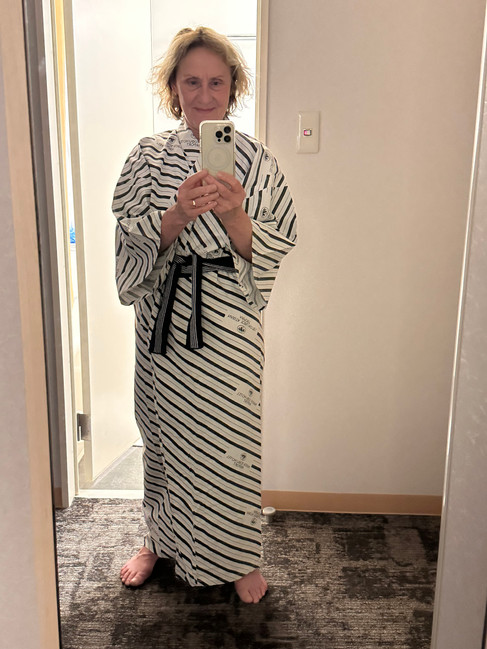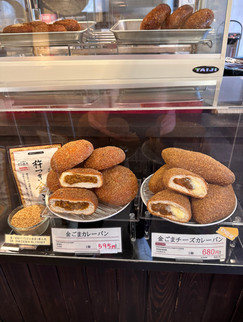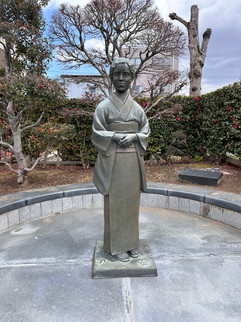Our Asian Adventure: First up - Narita, Japan (don’t miss the bus)
- debbiemanderson1
- Mar 10
- 5 min read
Updated: Mar 10

When your husband’s cousin has spent years living and working in Malaysia, the decision to take a Southeast Asia trip was an easy one, especially knowing that he would be available as our own private tour guide for a portion of the adventure. We might have had just a little encouragement from him.
Southeast Asia is a long way from our home on the Canadian prairies. We decided to take the trip in two stages. After our 10.5 hour flight from Calgary to Narita, Japan (thanks, Westjet for a great non-stop flight), we spent two nights in Narita as a way to catch our breath and stretch our legs before our 7.5 hour flight to Kuala Lumpur, Malaysia. We stayed at an airport hotel, the Tobu Hotel Airport, with shuttles running back and forth and into the town of Narita seemingly non-stop. (Here’s a side note: We are returning to Japan for a week at the end of our adventure and will also be staying at this hotel even though it will require an hour train ride each day into Tokyo. As we were researching hotels, the prices in central Tokyo were astronomical - and I don’t mean just a couple of hundred dollars more per night. Staying near the airport and taking the train into Tokyo was much more affordable. After some further research, we found that we would be hitting Tokyo at prime cherry blossom season - end of March/early April - and apparently people flock to Tokyo purely to view the display of colour. A week later, prices fell to half. We had no idea. I’ll tell you more about cherry blossoms in a month.)
Our hotel room, replete with Japanese chairs and ‘yukata’, housecoat.
Our brief 36 hours in Narita confirmed all our stereotypes of Japan: kindness, precision, cleanliness, professionalism, respect, and dignity are everything. The country runs like clockwork. We watched as a family was only seconds late for a shuttle bus that pulled away, leaving them standing. When they say the bus leaves at 7:00, the bus leaves at 6:59 or, at the latest, 7:00.
Narita is a city of about 130,000, roughly 60 kilometres east of Tokyo and is home to the huge Narita International Airport which, of course, runs with precision, especially if you have filled out the arrival card on line ahead of time. There are staff everywhere to kindly and gently point you in the right direction.
Narita is a perfect place to catch your breath, and I think it will be a great place to return to each night as a respite from the crowds in Tokyo at the end of March.
We started our day in Narita with a walk around the local neighbourhood. It was here that we stated to realize just how prevalent temples and shrines are in Japan (there is actually a difference between temples and shrines relating to religion that you can research). They are an important religious and cultural part of life, places for meditation, learning, and prayer. There are some 80,000 shrines and some 77,000 temples in Japan. Structures can be huge and elaborate (as we will find later in the day) or simple local places of worship (as we found on our morning walk).

The small neighbourhood Sobataka Shrine was only steps from our hotel.
While strolling, we came upon the sweet little Tokko Cemetery. True to Japanese form, it was humble and neat, lacking the elaborate gravestones of some pretentious cemeteries we have visited in the world. The graves are marked with simple gravestones, often with a shrine or temple statue. We were intrigued by the wooden sticks standing upright around each grave. We learned they are called sotoba and contain the name, prayers, and date of death. Sotobas have a lengthy religious history that you might want to research.
The cemetery also contained a rack of water buckets for ritual cleansing of graves:

After learning how precise the Japanese are, we ensured we were on time to catch our 11:10 shuttle to the Narita Station in the town of Narita. There are two recommended ‘things to do’ in Narita - walk the 800 metre Naritasan Omotesando Street and visit the Naritasan Shinshoji Temple at the end of the street. From the Narita Station, just look for the statue of the Kabuki actor for the start of the Omotesando walk. (The Kabuki actors played an historic role in the history of the Naritasan Shinshoji Temple.)

Omotesando Street is delightful, lined with little craft shops and restaurants and food stalls (150 or more). It was not busy when we visited but it probably becomes quite packed in the summer (or during prime cherry blossom time). Check out the local crafts. Sample traditional delicacies. Hunt down all the adorable statues of the 12 Japanese zodiac animals. Watch a street performer. Have an authentic Japanese lunch. Try the eel delicacy - or not. Here’s some photos from adorable Omotesando Street:
When we asked locals for lunch suggestions, they all said we had to have eel on Omotesando Street. ‘Unagi’, or fresh water eel, is a local delicacy, and people were lined up at several restaurants where workers cleaned and sliced and grilled with, of course, Japanese precision. The finished product, which often has a sweet and savoury glaze, looked quite tasty, but we left the sampling for another day.

After our delightful stroll, we reached the piece de resistance - the Naritasan Shinshoji Temple, a Buddhist temple founded in 940. Being that old, it has a lengthy history that you might want to research. Although it started as a single building, the temple now includes numerous structures, some intricate and some quite plain, and the beautiful Naritasan Park that covers 165,000 square metres. Many of the buildings are designated as Important Cultural Properties. The temple attracts 10 million visitors a year, three million of these visiting between January 1st and 3rd for the first prayer worship of the year. This was our first major temple visit of our Asian adventure, and it was breathtaking.

The Main Gate constructed in 2007.

The second gateway.

Three-storied pagoda from 1712.

The Great Pagoda of Peace from 1984.

The Main Training Hall from 1968.



After marvelling at the temple and grounds, it was time for lunch, our first (of how many?) ramens in the next month.

Our one day in Narita left us with only good first impressions of Japan. I can’t wait to return in three weeks’ time for a longer visit and to learn more about Japanese life.
A final note on travelling to Japan - be sure to read what is not allowed in the country. In addition to the ‘normal’ items that are not allowed in any country such as drugs, Japan also has restrictions on many over-the-counter medications that might leave you emptying your travel emergency kit and attending a pharmacy in Japan if you need medication (and you’ll have to answer a few questions before they sell you the medication - it’s that strict).
Our next destination is Kuala Lumpur, Malayasia. We’ll talk later.














































So much beauty and culture to take in !
Amazing pictures, so much to see in one day already !! Very Great Blog again Bev. !!